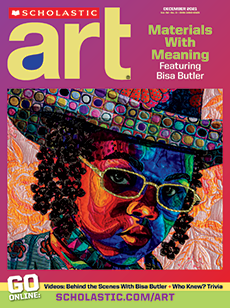Snap a selfie, a landscape, or a photo of your pet. Did you use light to enhance the image—even if you weren’t aware you were doing so? Across genres and mediums, light is as important in art today as it was hundreds of years ago. The contemporary artists featured on these pages explore light to creatively illuminate their ideas.
Take a selfie. Did you use light to help you capture the photo? Light is as important today as it was years ago. The contemporary artists whose work is on these pages play with light to express their ideas.
